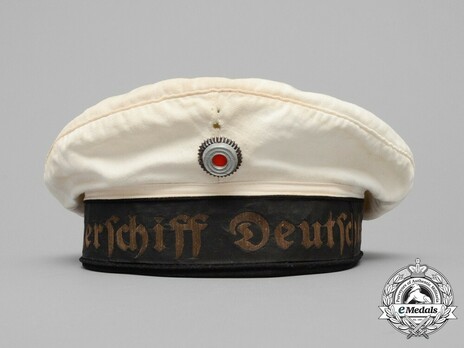Afrikakorps Kriegsmarine Sailor's Cap
SKU: 23.GOR.01.03.02.004
Estimated market value:




Estimated market value:
Attributes
History
During the Second World War, German troops stationed in northern Africa are generally referred to as the Afrikakorps. Technically, this is not entirely correct, since some German units operating in Africa were not actually part of the DAK (Deutsches Afrikakorps), and some units of it were, in fact, Italian ones. However, for the purpose of collecting so-called “tropical” uniforms and insignia, collectors have simplified the meaning of the term.
The first German troops were sent to northern Africa in February of 1941, to support their Italian allies against the British. The climate of the African continent made it necessary to wear specialised uniforms and gear that not only supported the soldiers in serving in a hot and arid environment, but also helped them in blending in with the landscape, which, in general, presented itself as brown, olive, khaki, or sand/tan in colour. Worn over long periods of time under the blistering desert sun, some uniforms were eventually bleached to white or off-white. Uniforms and insignia in these colours are often referred to as “tropical”, and it is worth noting that they weren’t just worn by members of units stationed in Africa, but in the entire Mediterranean theatre of war, including southern France, Italy, the Balkans, and Greece, as well as in southern Russia during the summer months. Tropical uniforms were worn by members of all three branches of the Wehrmacht: the Heer (army), the Kriegsmarine (navy), and the Luftwaffe (air force). Members of the Waffen-SS stationed in southerly regions also wore tropical-style uniforms, and even though they technically have no connection to the DAK, all tropical uniforms and insignia of all branches of the German military are listed here.
The Sailor's Cap was primarily worn by Kriegsmarine personnel of Junior Non-Commissioned Officer (NCO) or Enlisted Men (EM) ranks. It was also worn by Kriegsmarine Cadets during the Second World War.
It is composed of several main elements, including the cloth top cover and piping, the navy blue cap band with piping, the cap band tally (Mützenbänder), the interior lining, the diamond-shaped moisture shield, the brown leather sweat band, and the manufacturer’s logo and associated information. Each cap was also adorned with a tricolour cockade and a national emblem.
In 1926, caps with a removable top cover were introduced. These caps had an additional layer of white gauze added to the top of the cloth lining. This form of cap allowed the personnel to switch between a navy blue top cover and a white top cover. The navy blue top cover was utilized for general wear, while the white top cover was only meant to be worn in tropical climates; this regulation was largely ignored. The caps with a permanent top cover were often manufactured privately.
In 1919, the cap band tally (Mützenband) featured the name of the unit or ship of the wearer in Latin lettering. In 1929, the lettering used on the tallies was changed to Gothic. Initially, all numbers were written in the Roman style, but they were changed to the Arabic style in 1935. Lastly, in 1938, a standardized tally policy was introduced wherein “KRIEGSMARINE” was the only lettering featured on the tally. In September 1939, all other peacetime tally variations were removed from circulation. These tallies were generally composed of silk, and the gold-coloured letters were machine embroidered with rayon, cotton, and artificial silk thread; gilt thread quickly oxidized as a result of the sea air.
This cap was also known as the Enlisted Men's Cap, the Service Cap (Dienstmütze), the Cloth Cap (Tuchmütze), and unofficially as the Donald Duck Cap.


Comments
Sign in to comment and reply.


Scroll Top